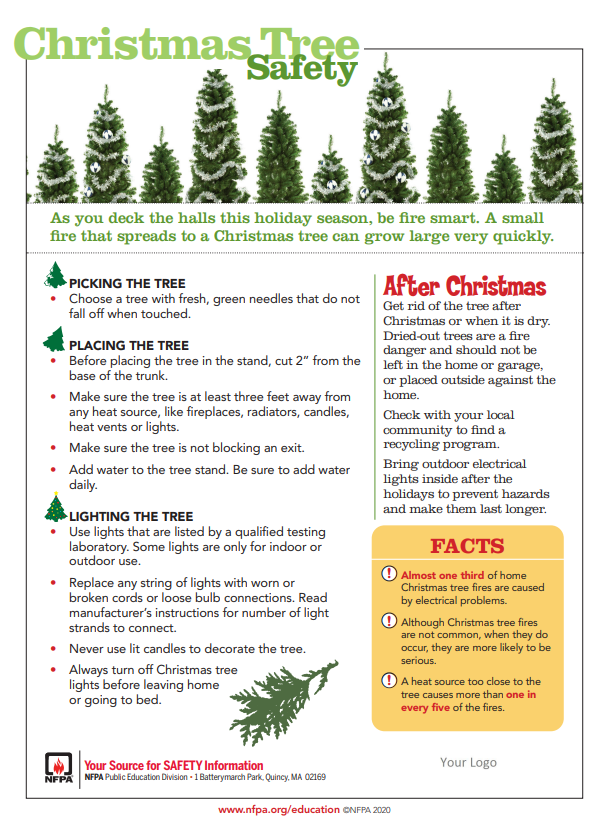
The holiday season is known for its joyous festivities, flickering lights, and winter greens, but it also carries a risk of fire, which may rapidly transform this joyous time of year into an unthinkable one. In order to help everyone enjoy the holidays safely, the Salinas Fire Prevention Division follows National Fire Protection Association lead and provides videos, tip sheets, and other materials to raise public awareness of potential fire hazards.
Winter Holiday Fire Facts
- U.S. fire departments responded to an estimated average of 835 home structure fires per year that began with decorations, excluding Christmas trees. These fires caused an annual average of 3 civilian fire deaths, 30 civilian fire injuries and $14 million in direct property damage.
- Electrical distribution or lighting equipment was involved in more than two in five (41%) home Christmas tree fires.
- Nearly one of every five (20%) Christmas tree fires were started by lamps or bulbs. Eleven percent were started by candles.
- Roughly two of every five (40%) home Christmas tree fires started in the living room.
- Candle fires peak in December and January with 11 percent of candle fires in each of these months.
- Thanksgiving is the peak day for home cooking fires, followed by Christmas Day and Christmas Eve.
- Year round, one-third (32%) of home decoration fires were started by candles. This jumped to almost half in December when candles started 46% of such fires. Cooking started one-fifth (20%) of decoration fires.
Source: NFPA's Applied Research
Christmas Tree and Ornamental Fire
You can make the holidays safer for you and your family by taking the time to decorate your house with care. Fire departments in the United States responded to an average of 155 home fires that began with Christmas trees annually between 2018 and 2022. An estimated 835 residential structure fires that started with decorations—not including Christmas trees—are responded to by US fire departments.
Source: National Fire Protection Association
Disposal of Christmas trees
Christmas trees becoming increasingly combustible as they dry out. In January, 36 percent of Christmas tree fires occurred. Christmas tree fires are uncommon, but they may spread quickly.
